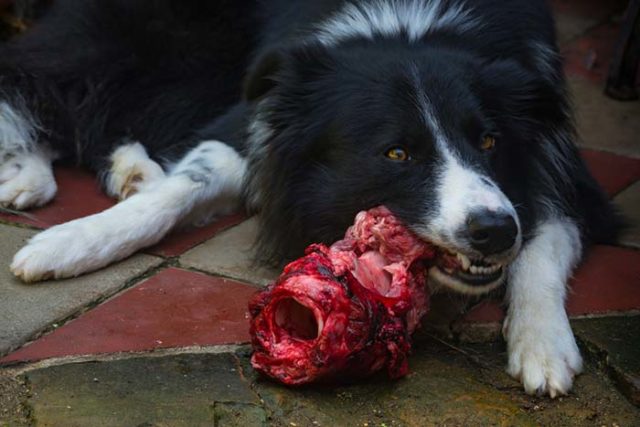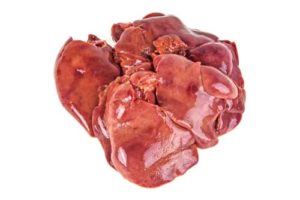
Many dog owners who switched to raw feeding diet limit the amount of organ meat they give to dogs, but that might not be the ideal to raw feed your pet.
Suppose you subscribe to the raw diet principles. Do you also follow the Biologically Appropriate Raw Food (BARF) model to a letter that says you should feed your dogs 70 percent raw meat, 10 percent bones, 10 percent organs (of which liver is 5 percent), and 10 percent vegetables and fruits?
If so, you might need to reconsider.
Experts and new research now say that you need to increase the percentage of organ meat that makes up your pet's daily meals, with the exception of the heart, by 15 to 25 percent.
Some experienced raw diet proponents, on the other hand, suggest giving as much as 25 percent spleen and 25 percent kidney (totaling 50 percent organs), according to The Raw Feeding Community.
Why Increase the Organ Meat Intake?
As raw diet trends change, more research becomes available for us to figure out what's best to feed our dogs.
Organs are packed with nutrients that your dog might otherwise miss out on if his diet is mostly muscle, meat, or bones.
Organ meat is the most nutritious component of a raw diet, and it's extremely rich in minerals like copper, iron, magnesium, manganese, and zinc, among other nutrients.
But every organ itself also contains its own unique nutrients, which is why it's highly recommended that you mix things up during feedings so that your dog can benefit more from the variety of nutrition.
For instance, the heart has high thiamine content and the liver is a rich source of vitamin A, folate and iron. But these organs might be lacking in other nutrients like vitamin E or niacin so you need to feed other organ sources as well.
Difference Between Muscle Meat and Organ Meat
 Offal meat is another term for organ meat. However, some raw feeders treat organ food like the gizzard, heart, and tongue as muscle meat and not offal meat. Muscle meat by itself is primarily protein and is not nutritionally dense as organs. So, even if you switched to raw feeding and supply tons of meat daily, your dogs are missing out on the best part of this diet.
Offal meat is another term for organ meat. However, some raw feeders treat organ food like the gizzard, heart, and tongue as muscle meat and not offal meat. Muscle meat by itself is primarily protein and is not nutritionally dense as organs. So, even if you switched to raw feeding and supply tons of meat daily, your dogs are missing out on the best part of this diet.
Offal meat is rich in vitamins A, B, D, E, and K. This type of meat also has high omega-3 fats with DHA and EPA content, which your dog needs for optimal health.
Offal meat consists of the brain, eyes, kidneys, pancreas, liver, spleen, testicles, and tripe.
Apart from the liver, which is readily available at supermarkets, the best source of these kinds of organ meats is the Asian market and some butcher shops.
You won’t likely find a variety of organ meat in your local supermarket or in most butcher shops.
However, if you can source the meat from stores that are supplied with grass-fed animals, then that would be a better choice.
What's the Best Organ to Feed?
If you feed your dog every type of organ meat, you won't likely have to give supplements and vitamins.
This food can easily fill a dog's daily nutritional requirements better than processed or commercially produced food.
You can also save on your vet bills and meds since your dog is guaranteed to nutritionally benefit from what he is eating.
It might seem gross at first to give your pup other kinds of organ meat, such as eyes or testicles, but your pup is likely to enjoy it. Plus, you don't give these foods whole anyway.
You can grind the meat first, mix it up with muscle meat, portion it, and keep it in freezer-ready containers.
Trying a raw food diet with lots of organs requires commitment. But because you know your dog best, you are also the best gauge for what food to feed him.
After adding more organic meat to your dog’s daily raw diet, observe the dog's digestion and stool with every feeding. See how his body will react and then adjust accordingly if you learn that his body can or cannot process the food without issues.
READ NEXT: Raw Diets for Dogs Have Health Benefits, New Study Suggests













